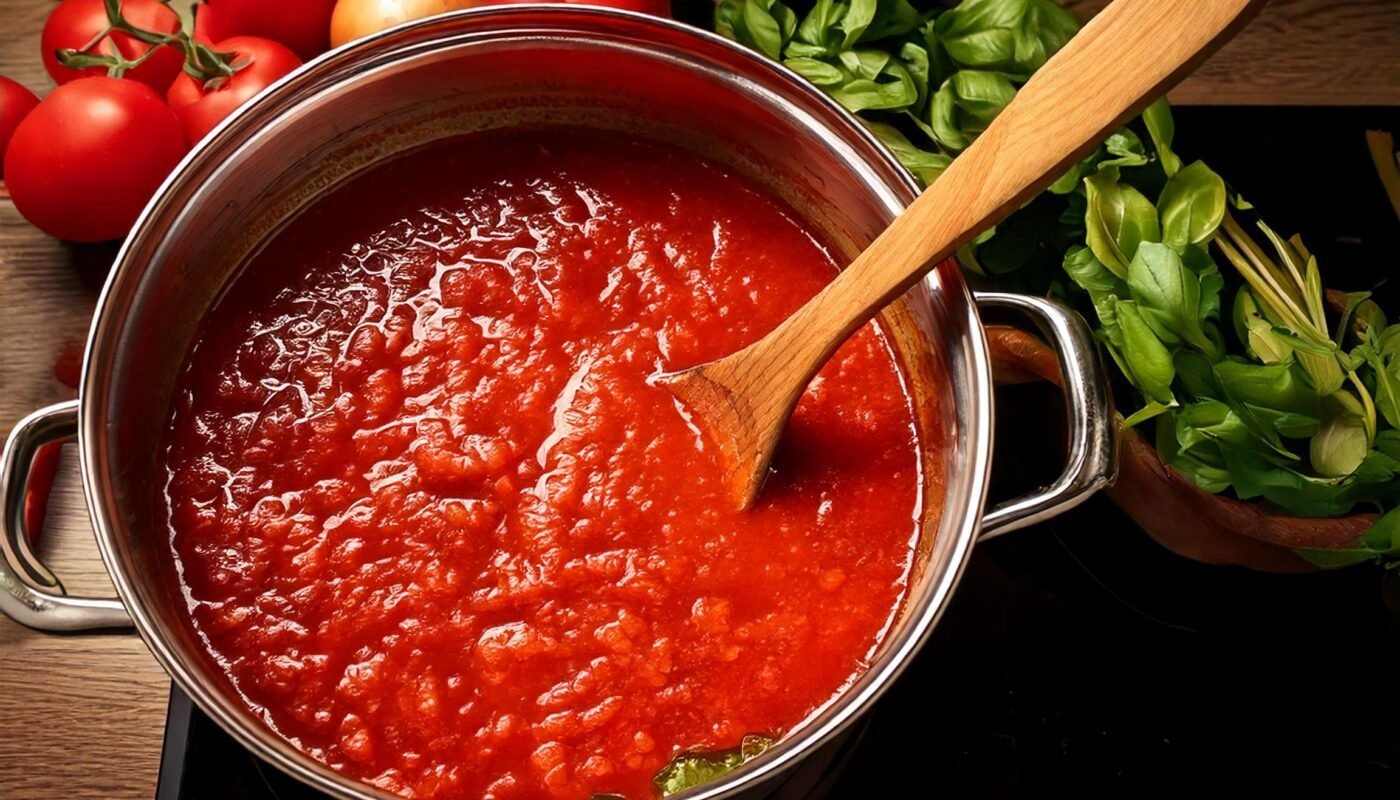Master the simplicity of sugo, Italy’s classic tomato sauce, and bring bold, authentic flavors to your home-cooked meals.
Sugo: The Timeless Italian Sauce That Brings Every Meal to Life

In the heart of Italian kitchens, the humble sugo reigns supreme. A classic traditional Italian sauce crafted from just a handful of ingredients—tomatoes, olive oil, onions, garlic, and basil—it represents the soul of Italian cuisine. What sets sugo apart from more complex sauces like marinara is its reverence for simplicity, allowing each component’s natural flavor to shine. This foundational sauce has inspired generations of Italian cooks, and now, it can find its way to your dinner table with ease.
Sugo is more than just a sauce; it’s a culinary tradition that connects generations and is adaptable to a wide variety of dishes. Whether spooned over a tangle of spaghetti or used as the secret layer in a perfectly crispy Eggplant Parmesan, sugo has a transformative power. Here’s how you can bring this touch of Italy into your own kitchen.
A Recipe that Honors Tradition with Every Stir and Simmer
The beauty of sugo lies in its simplicity. To make your own, start by warming two tablespoons of extra-virgin olive oil in a saucepan. The scent of finely chopped onions and minced garlic as they sauté will transport you straight to a bustling Italian kitchen. Once they’ve turned translucent and aromatic, add the crushed San Marzano tomatoes. This prized variety, known for its rich and slightly sweet flavor, is crucial for a sugo that truly delivers.
How to Make Sugo

Ingredients:
- 2 tablespoons extra-virgin olive oil
- 1 medium yellow onion, finely chopped
- 2 cloves garlic, minced
- 2 cans (28 ounces each) whole peeled San Marzano tomatoes
- Salt and freshly ground black pepper, to taste
- A handful of fresh basil leaves
Instructions:
- Sauté Aromatics: In a large saucepan, heat the olive oil over medium heat. Add the chopped onion and sauté until translucent, about 5 minutes. Add the minced garlic and cook for an additional minute until fragrant.
- Add Tomatoes: Crush the canned tomatoes by hand or with a spoon, then add them to the saucepan along with their juices. Stir to combine with the onions and garlic.
- Simmer: Season the mixture with salt and pepper. Bring the sauce to a gentle simmer over low heat, partially covering the pan. Allow it to cook for about 30-45 minutes, stirring occasionally, until it thickens to your desired consistency.
- Finish with Basil: Tear the fresh basil leaves and stir them into the sauce during the last 5 minutes of cooking. Adjust seasoning as needed.
- Serve: Remove from heat and use immediately over pasta, or let it cool and store for later use.
After seasoning the tomatoes with salt and pepper, let the mixture simmer gently. This is where the magic happens: the sauce thickens, flavors meld, and memories of Italian family dinners take root. Just before serving, stir in torn fresh basil leaves for an aromatic finish.
Versatility Beyond the Pasta Bowl: Sugo in Every Dish

The versatility of sugo is unmatched. Pasta dishes, from spaghetti to penne, take on a life of their own when coated in sugo’s rich, savory goodness. But its uses extend far beyond pasta:
- Pizza Sauce: Spread sugo over a homemade dough, then add your favorite toppings for a pizza that bursts with fresh tomato flavor.
- Meat Dishes: Whether you’re simmering chicken cacciatore or serving up meatballs, sugo adds a complex depth that brings out the best in proteins.
- Shakshuka: Yes, sugo’s Mediterranean cousin makes the perfect base for poached eggs, creating a hearty dish that can start your morning or end your night.
Some variations include the addition of red wine for a more robust flavor or a dash of red pepper flakes for heat. Carrots and celery, sautéed with the onions, can lend a delicate sweetness to the sauce. This flexibility allows sugo to adapt to your taste while maintaining its classic character.
From Your Stove to Your Table: Making Sugo Your Own
For busy cooks, sugo can be made in large batches and stored for quick meals throughout the week. Refrigerate it for up to a week or freeze it for even longer, ensuring that a taste of Italy is always within reach.
By mastering this sauce, you’re not just following a recipe; you’re embracing a tradition, connecting to Italy’s culinary heritage with every bite. So next time you reach for a jar of store-bought sauce, consider crafting your own sugo instead—you may just find that it becomes a tradition worth savoring.
Your Turn – Like This, or Hate it – We Want To Hear From You
Please offer an insightful and thoughtful comment. Idiotic, profane, or threatening comments are eliminated without remorse. Consider sharing this story. Follow us to have other feature stories fill up your Newsbreak feed from ThumbWind Publications.
Follow ThumbWind Food Features
Is A.1. Buttering Us Up? New Product Dips Into Steakhouse Game
Best Cuban Sandwiches – 7 Must-Visit Restaurants for Authentic Flavors Savoring the Flavor
Unveil the Recipe for World’s Best Deviled Eggs
Explore Michigan’s Thumb and the Great Lakes on ThumbWind.com




